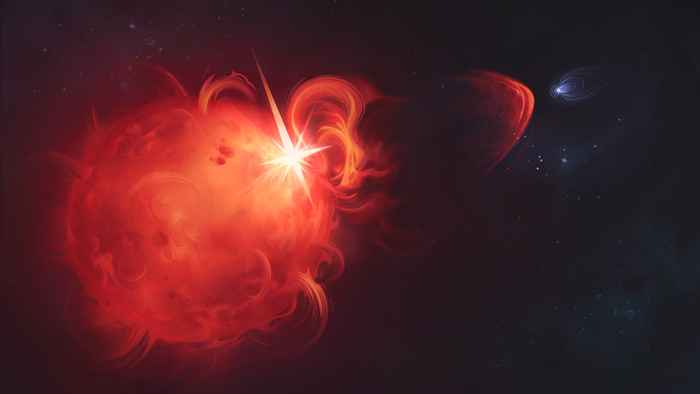Evidence of a Massive Stellar Storm on a Nearby Star
12 November 2025

First clear radio detection
CMEs are large eruptions of magnetized plasma from stars and play a major role in shaping space weather in our Solar System – such as driving the beautiful aurorae we see on Earth. While CMEs have long been expected to occur on other stars, this is the first time one has been observed through its characteristic radio signal.
“For the first time, we have evidence that hot plasma has been ejected from another star into interplanetary space,” said Dr. Callingham, author of the study and affiliated with both ASTRON (het Nederlands Instituut voor Radioastronomie) and API. “This gives us a chance to move beyond theory based solely on the Sun.”
“We show that this eruption would be devastating for a planet around such a star,” sai d Dr. Callingham. “The CME has the power to compress an Earth-like magnetosphere all the way down to the planet's surface, temporarily removing the planet’s atmospheric protection. This means such eruptions could determine whether a planet is potentially habitable.”
LOFAR’s unique capabilities
Red dwarf stars, which are 10 to 50% the mass of the Sun, are the most common hosts of Earth mass planets. But because their habitable zones, where liquid water could exist on their surface, are so close in, orbiting worlds are likely subjected to far more intense stellar storms than Earth.
“This discovery shows us that violent space weather is not unique to our Sun,” said co-lead author Dr. Cyril Tasse of the Observatoire de Paris-PSL. “We now know planets around small stars are facing frequent, powerful blasts. Thanks to the advanced data-processing methods developed at the Observatoire de Paris-PSL, we now have a way to measure just how extreme those conditions are”.
The finding opens a new window onto the study of space weather in other solar systems, with major implications for the search for a habitable planet. Upcoming observatories such as the Square Kilometre Array will allow astronomers to uncover many more of these stellar eruptions and understand how they shape the fate of exoplanets.
About the Research
The study was carried out within a successful international collaboration, highlighting the joint leadership of ASTRON and the Observatoire de Paris-PSL, and the critical role of software tools developed in France. The detection was made during the LOFAR Two-metre Sky Survey, which is mapping the northern sky and has observed about 86,000 stars within 100 parsecs of Earth.
The research was supported by the European Research Council, the Dutch Research Council (NWO), and other international partners. LOFAR is operated by ASTRON as a European Research Infrastructure Consortium (ERIC).